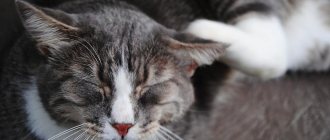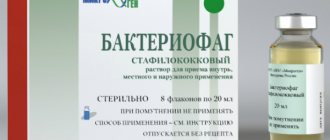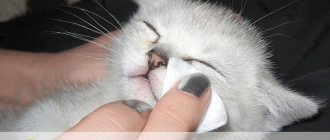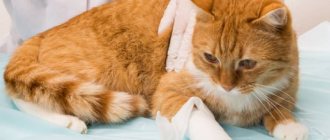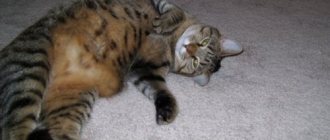Sterilization is a very important stage in the life of every cat and, of course, its owners. At this time, your pet needs to be given as much attention and care as possible. Most often, the operation goes away without a trace and within a couple of days the pet returns to a full life. However, there are exceptions and the cat behaves strangely, to put it mildly... Increased body temperature, rapid breathing, inflammation of the suture - these are not all the symptoms of the unfavorable condition of the cat after the sterilization procedure. There is another one that very often scares cat owners. What does such a symptom as trembling indicate and whether it is necessary to sound the alarm, we will discuss further.
Why might a cat tremble after sterilization?
There can be many reasons for trembling and these will be discussed further.
After all, the most important thing in this situation is to be able to understand the reasons for the appearance of this symptom.
It is also important to understand at what point you should seek help.
The process of recovery from anesthesia
When recovering from anesthesia, the cat will have poor coordination and may tremble. This is a normal reaction to medications. Usually such trembling does not last long and does not carry anything bad.
Advice!
Observe your pet, do not leave her alone and monitor all changes occurring in her condition. If everything is in order, then after a while the trembling will pass.
Frozen
Cats are very warm-blooded animals and the optimal room temperature for them is about 20 degrees. All cats tremble even after a regular bath, let alone any temperature changes.
As you know, body temperature decreases during sleep. The same thing happens while under anesthesia, that is, the cat may simply freeze, which will provoke trembling.
Advice!
To prevent this from happening, you need to place your pet next to a warm radiator or place a heating pad near it. You can try to cover your pet with a warm blanket, but most likely this will not be successful, because animals behave very restlessly when they come out of anesthesia.
The blanket is in the way
Some animals do not perceive any foreign objects on their bodies. One of these things (alien to the animal) is a blanket, which is put on after the sterilization procedure.
By trembling, the animal may try to remove the blanket and thereby relieve itself of discomfort.
Attention!
Some cats shake when they are stressed, and the cause of discomfort may be the same blanket.
In this case, you can try to wait until the cat calms down or consult a veterinarian about removing the blanket for a short period of time. If the doctor approves this step, then it is important to ensure that the cat does not stain the stitch or lick it under any circumstances. At this time, you need to keep an eye on your pet.
Post-anesthesia care
During the period of recovery from anesthesia, the cat may suffer from involuntary urination or vomiting, so you need to monitor it very closely - if it starts to constantly lick itself, you need to lay a newspaper or place a bag on it. Feeding can begin only after 24 hours, while the animal’s poor appetite may persist for several more days. The cat will be able to fully drink water after 3-4 hours.
After sterilization, a special blanket is put on the cat, which she will have to wear for 10-14 days until the stitches are removed.
To treat healing stitches, you need to regularly remove this blanket from the hind legs and immediately put it back on after treatment so that the cat does not lick the stitch wounds. In addition, you need to carefully ensure that the animal does not try to jump on a hill, since due to weakness it may not be able to jump and get caught on something in the blanket, hanging in it. Naturally, the cat will begin to squirm, trying to get out, as a result of which the seams will simply come apart.
The cat is shaking long after surgery
As you already understand, short-term trembling that goes away over time is not dangerous. However, if the cat is shaking for a long time, then this sign signals problems
Important!
If you discover this symptom and it does not go away, you should immediately contact a veterinary clinic to determine the causes and timely treatment.
Inflammatory process
Trembling a day after surgery is a sure sign that there are some problems. Perhaps the symptom is caused by a fever, which was provoked by an inflammatory process that began in the body.
If the matter is really inflammation, then the following symptoms will indicate this:
- lack of appetite;
- suture swelling;
- discharge of ichor, pus from the wound;
- the appearance of vomiting;
- apathy and indifference of the animal.
If trembling is accompanied by any of the above symptoms, you should definitely visit a veterinarian. Only after an examination will he be able to make a diagnosis and prescribe the necessary treatment.
Lack of vitamins
Convulsions and tremors can be caused by a lack of vitamins in the body, namely magnesium, calcium or vitamin B. Usually, improvements occur after the missing vitamins are added to the pet’s diet. The required course is about 10 days.
Interesting!
Veterinarians advise adding brewer's yeast to your pet's diet in order to provide her with the necessary amount of vitamin B. Consult your doctor about this step.
Fatigue from physical activity
Sometimes cats that have just been spayed may flinch after physical activity. This process is similar to how a person’s legs shake after running. With the same success, trembling goes away after some time in cats. However, if the pet has rested, but the trembling has not gone away, then this is a reason to visit the veterinarian.
What types of epilepsy are there?
There are several forms of epilepsy. They differ from each other in etiology and approach to treatment. To successfully rid a four-legged patient of convulsive seizures, the veterinarian first directs all knowledge and experience to determining the type of disease.
Detailed information about the types of epilepsy in cats and their characteristics is presented in the table:
| Form of feline epilepsy | Description | Peculiarities | Pathology prognosis |
| Congenital (real, idiopathic) | This congenital disease manifests itself in the pet at an early age. The disease can be the result of genetic abnormalities, impaired brain formation, and birth injuries to the head. | This type of disease is extremely difficult to diagnose. In most situations, it is not possible to determine the cause of its occurrence. This form of epilepsy accounts for 30% of all cases of detection of this disease. | Cannot be treated. In some cases, they resort to euthanizing the animal. |
| Acquired (false, secondary, symptomatic) | Develops as a result of endogenous and exogenous factors. | As a rule, pathology does not manifest itself immediately. | In most situations, once the root cause of the disease is eliminated, the seizures also stop. |
What to do?
The following recommendations must be strictly followed.
- Provide your pet with comfortable conditions, peace and warmth.
- Do not leave the cat alone during recovery from anesthesia and for the first time after.
- If you find that your cat is trembling, then you need to pay attention to the frequency and intensity of this symptom.
- If you observe unwanted symptoms for a long time, be sure to visit your veterinarian! Only with a visual examination can a diagnosis be made and appropriate treatment prescribed.
- If for some reason this cannot be done, then you need to contact the veterinarian by phone and get a consultation, describing all the symptoms present.
- Strictly follow all the veterinarian's recommendations and do not deviate from the prescribed treatment.
- Do not self-medicate under any circumstances and do not allow the condition in which the animal is to take its course! Negligence can cost your pet's life.
Is it possible to avoid muscle tremors?
It is impossible to completely exclude the possibility of tremor, but you can minimize the risk of its occurrence by observing the following rules:
- carry out preoperative treatment of the female in a timely manner against intestinal helminths and skin parasites;
- provide the animal with a nutritious diet;
- To carry out sterilization, use the services of a clinic with a good reputation;
- place a heating pad under the cat’s back for the first 1-2 days after surgery;
- protect the female from drafts;
- create conditions that reduce the stress factor (protect the animal from contact with other pets and small children, ensure silence and soft, dim lighting during the recovery period);
- if necessary, conduct a course of antibiotic therapy.
Many experts recommend leaving cats in the clinic for 10-12 hours after surgery. This ensures qualified care and assistance in case of complications. Owners who are unsure of their experience should not refuse this service, as it can save their pet’s life and maintain health.
Helping an animal during a seizure
During an attack, the cat may be injured. Following a number of rules will help to avoid this:
- When a seizure is approaching, you should try to create a quiet and calm environment in the house. It is recommended to close the curtains and dim the brightness. It is strictly forbidden to shout at your pet or use physical force against it. This will only worsen his condition.
- Place the cat in a position lying on its side on a flat horizontal surface (preferably the floor) to prevent it from falling from a height. It is recommended to cover the place where the pet lies with a sheet or oilcloth.
- Remove anything that could cause injury to the animal. During an attack, the pet makes sudden movements, so it can hit the furniture hard, injure itself on sharp objects and interior parts, or get burned when in contact with heating devices.
- Do not try to restrain the animal. This cannot be done for two reasons: such actions will not be able to stop the seizure, and attempts to hold the pet can lead to dislocation or broken limbs.
- Hold the cat's head to prevent it from choking on saliva, foam or vomit. It is forbidden to stick your finger into your pet's mouth, trying to pull out the tongue. Its retraction is excluded if the animal lies on a horizontal plane with its head turned to one side.
It is recommended to record the start and end times of the attack. If possible, it should be filmed - this will make it much easier for the veterinarian to diagnose the pathology. If the convulsions lasted more than 5 minutes, you should call a doctor at home.
Treatment of epilepsy in cats
Treatment of this pathology is carried out at home. To stop seizures in a cat, in most situations it is enough to stop the signs of the underlying disease. If an idiopathic form of epilepsy is identified or the root cause cannot be eliminated (brain tumor, liver cirrhosis), there is a need to use anticonvulsant drugs (Diazepam, Phenobarbital, Pregabalin, Gabapentin), the dosage and duration of use of which is determined by the veterinarian in each specific situation.
With a mild course of the pathology and rare convulsive attacks, the use of anticonvulsants may not be necessary. In this case, taking sedative medications, such as Corvalol or valerian, will be sufficient.
In addition to drug therapy, correction of the animal’s nutrition is necessary. There are special foods for epileptic cats. When feeding your pet natural food, it is recommended to reduce the content of carbohydrates and grains in the cat's diet to a minimum, and also increase the amount of protein.
Causes of epilepsy
Congenital and acquired epilepsy in representatives of the cat family is provoked by various factors. Causes of the first form of the disease:
- cat infection during pregnancy;
- intoxication of the baby’s body during intrauterine development;
- heredity – it is believed that this disease can be inherited;
- inbreeding (crossing of closely related individuals);
- birth head injury.
The second form of the disease can develop against the background of:
- traumatic brain injuries resulting from a fall from a height, bruise;
- neoplasms in the brain;
- infectious processes of viral and bacterial etiology;
- pathologies of internal organs (heart, blood vessels, liver, kidneys);
- poisoning with drugs, household chemicals, etc.;
- long stay in a stressful situation;
- deficiency of calcium, magnesium, vitamins B and D;
- metabolic disorders in the body.



